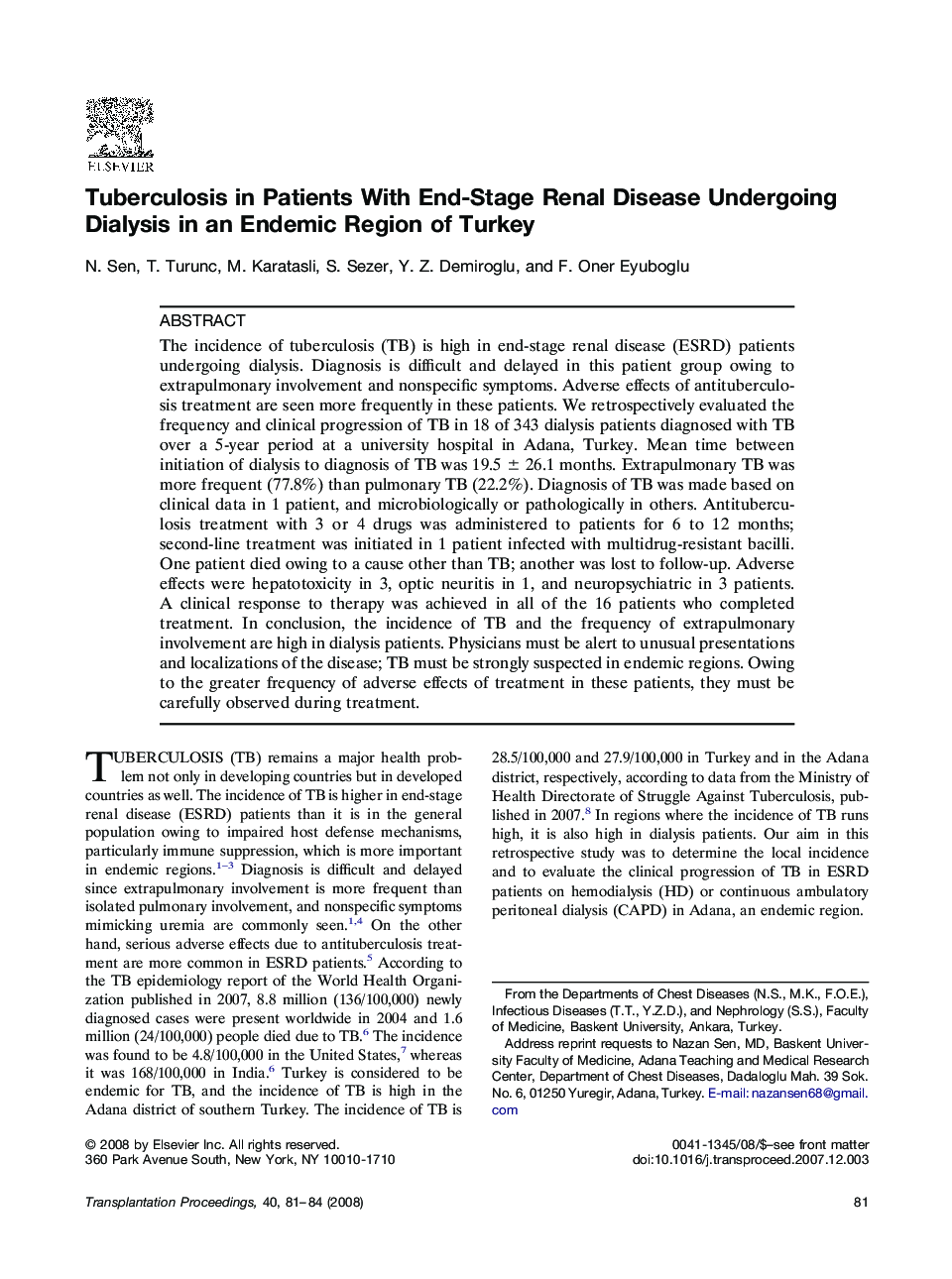| Article ID | Journal | Published Year | Pages | File Type |
|---|---|---|---|---|
| 4260430 | Transplantation Proceedings | 2008 | 4 Pages |
The incidence of tuberculosis (TB) is high in end-stage renal disease (ESRD) patients undergoing dialysis. Diagnosis is difficult and delayed in this patient group owing to extrapulmonary involvement and nonspecific symptoms. Adverse effects of antituberculosis treatment are seen more frequently in these patients. We retrospectively evaluated the frequency and clinical progression of TB in 18 of 343 dialysis patients diagnosed with TB over a 5-year period at a university hospital in Adana, Turkey. Mean time between initiation of dialysis to diagnosis of TB was 19.5 ± 26.1 months. Extrapulmonary TB was more frequent (77.8%) than pulmonary TB (22.2%). Diagnosis of TB was made based on clinical data in 1 patient, and microbiologically or pathologically in others. Antituberculosis treatment with 3 or 4 drugs was administered to patients for 6 to 12 months; second-line treatment was initiated in 1 patient infected with multidrug-resistant bacilli. One patient died owing to a cause other than TB; another was lost to follow-up. Adverse effects were hepatotoxicity in 3, optic neuritis in 1, and neuropsychiatric in 3 patients. A clinical response to therapy was achieved in all of the 16 patients who completed treatment. In conclusion, the incidence of TB and the frequency of extrapulmonary involvement are high in dialysis patients. Physicians must be alert to unusual presentations and localizations of the disease; TB must be strongly suspected in endemic regions. Owing to the greater frequency of adverse effects of treatment in these patients, they must be carefully observed during treatment.
